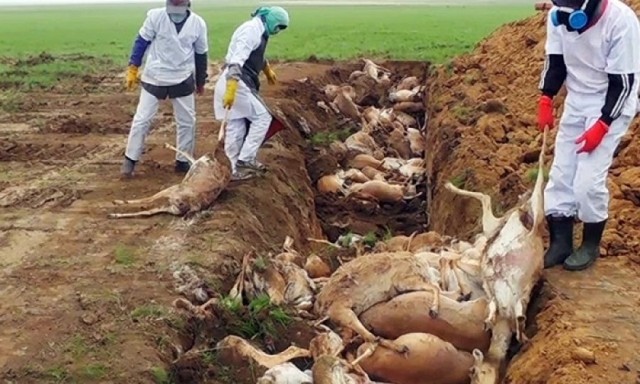A team of international scientists are now investigating the sudden disappearance of more than 100,000 saiga antelope that are native to Kazakhstan where the species are also considered to be endangered.
Officials announced this Wednesday that now raises concerns that these mysterious deaths may wipe out the saiga antelope that has been around since the Ice Age.
In just a short period of time, 40 percent of the animal population found in Central Asia has died out in the last two weeks where animal health experts reveal that a respiratory disease is the main culprit of this die off.
Kazakhstan is considered to be home of more than 90 percent of the world's population of saiga antelopes that have a distinct misshapen nose and lyre shaped horns.
According to zoology scientist Bibigul Sarsenova, the deaths of the saiga antelope are considered a great tragedy and if this unfortunate disease would occur again next year, the antelopes could just simply disappear from the face of the planet.
According to the International Union for Conservation of Nature, the saiga antelope is already a critically endangered species.
The Kazakh steppes are home to an estimated 300,000 antelopes that roam around the region where the first carcass was discovered on May 11. On May 27, more than 120,000 dead bodies were found littered in three large regions of their habitat, according to Agriculture Ministry officials.
According to Yerzhan Madiyev who is the deputy head of the ministry's veterinary committee, scientists believe that the cause of this massive death toll is pasteurellosis.
This disease can apparently infect humans and cattle including rabbits, dogs and cats via bacteria. The bacteria dwells on the upper respiratory tract naturally but this can be extremely harmful when the whole immune system is affected.
To date, local scientists are testing the soil and water to solve this huge mystery of the saiga antelopes' deaths according to Bagdat Azbayev who is the chairman of the Agriculture Ministry's forestry and wildlife committee.
Scientific experts from the UK and Germany including the World Organisation for Animal Health are now helping Kazakh scientists to further investigate these die offs.
Saiga antelopes used to roam the planet along with woolly mammoths and saber toothed tigers but during modern times, the antelope has been prized for its meat where poaching and disease wiped out population numbers to 21,000 making them endangered.
In a span of two years, the government devised a protection plan for the saiga where their numbers rebounded significantly.



























